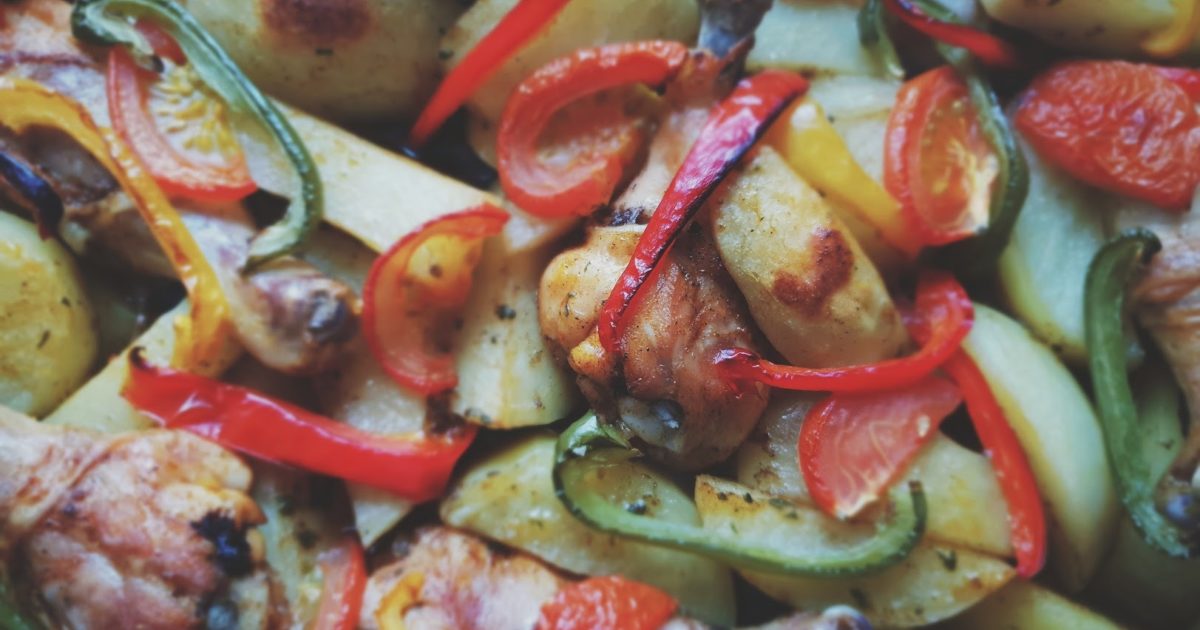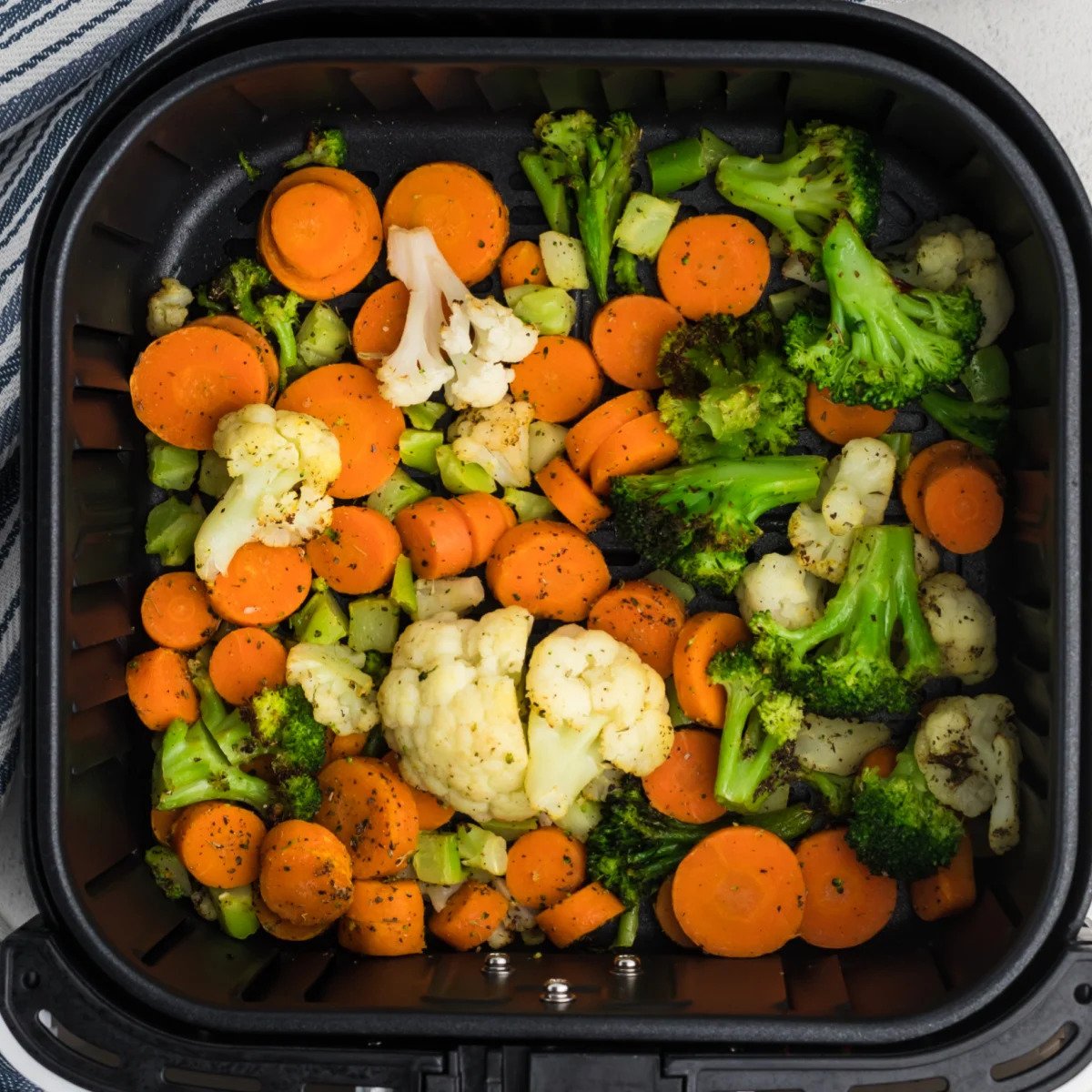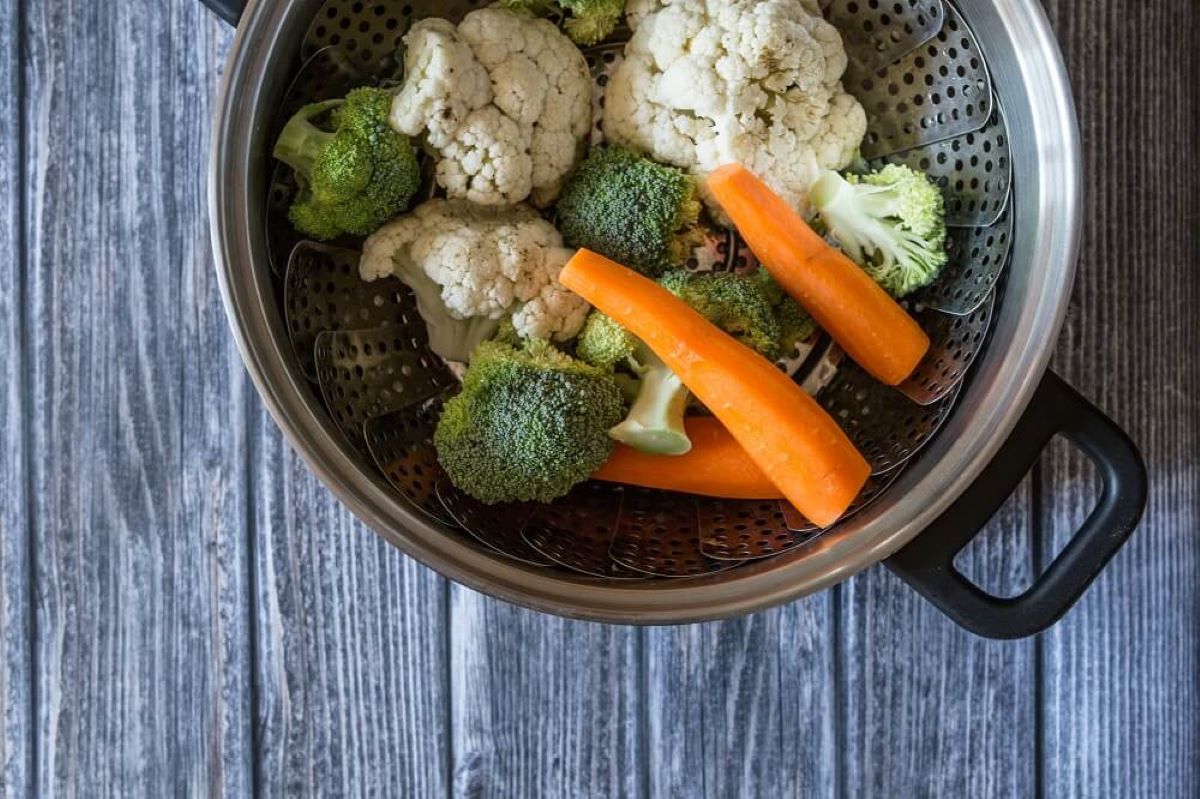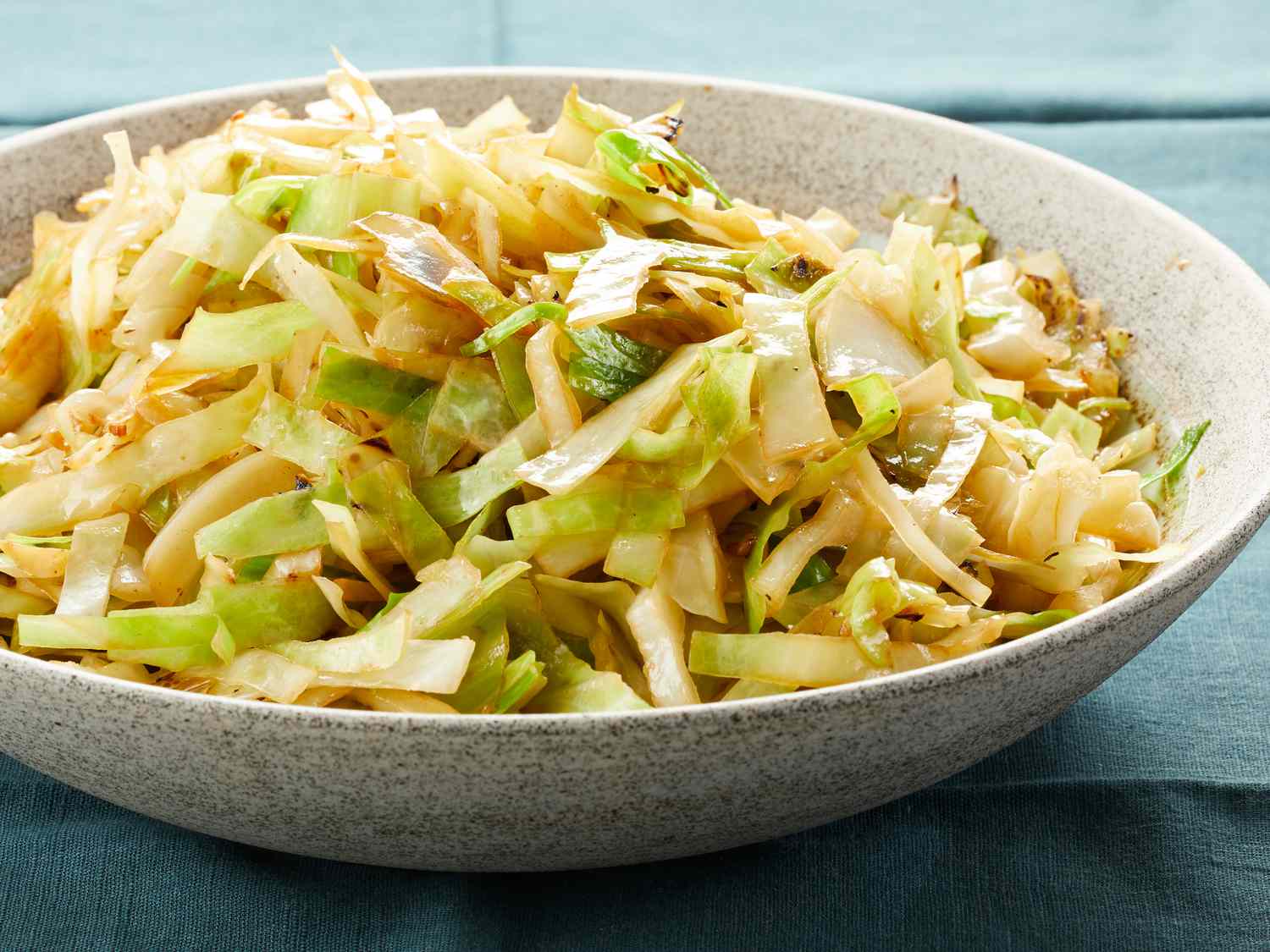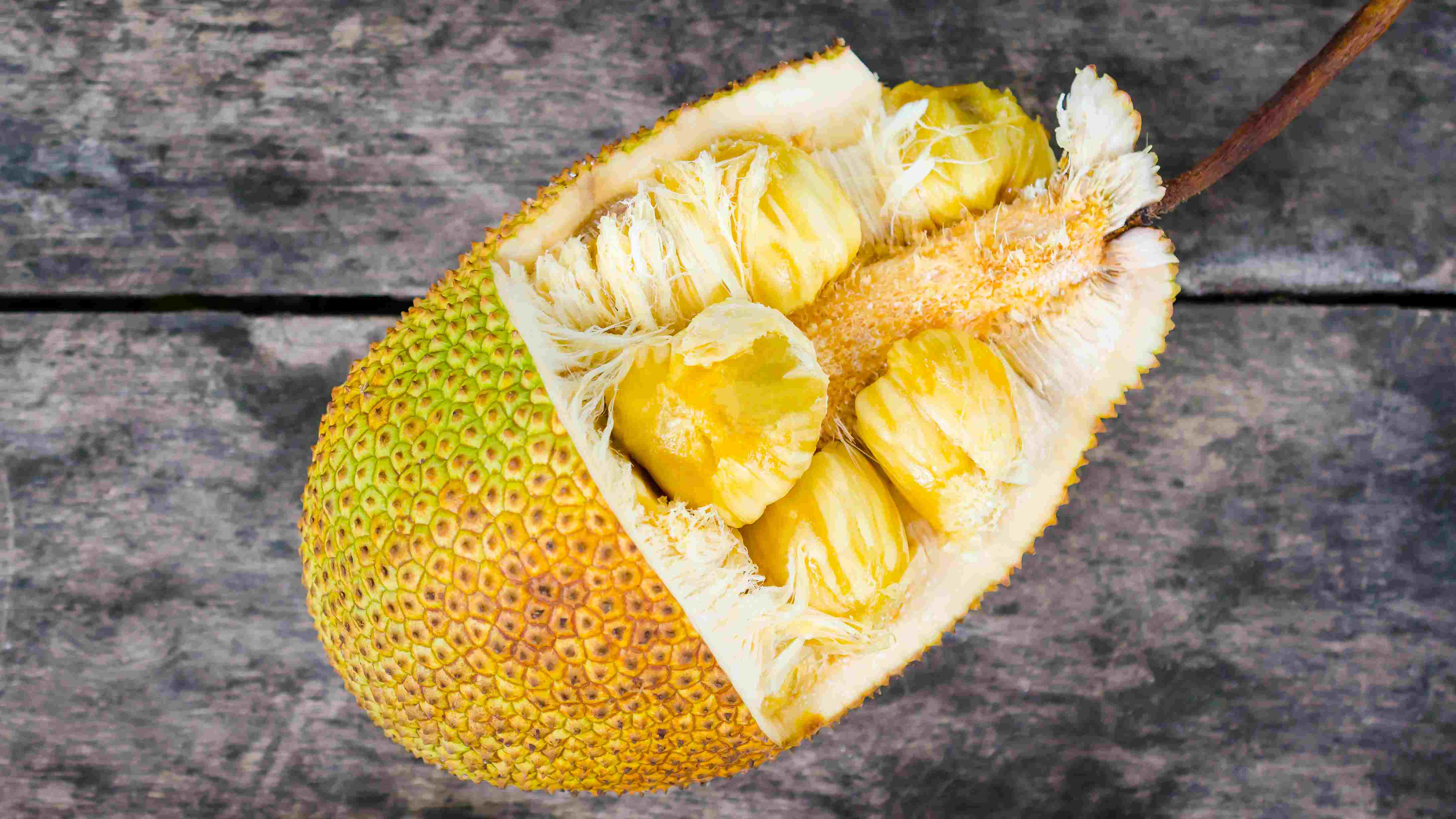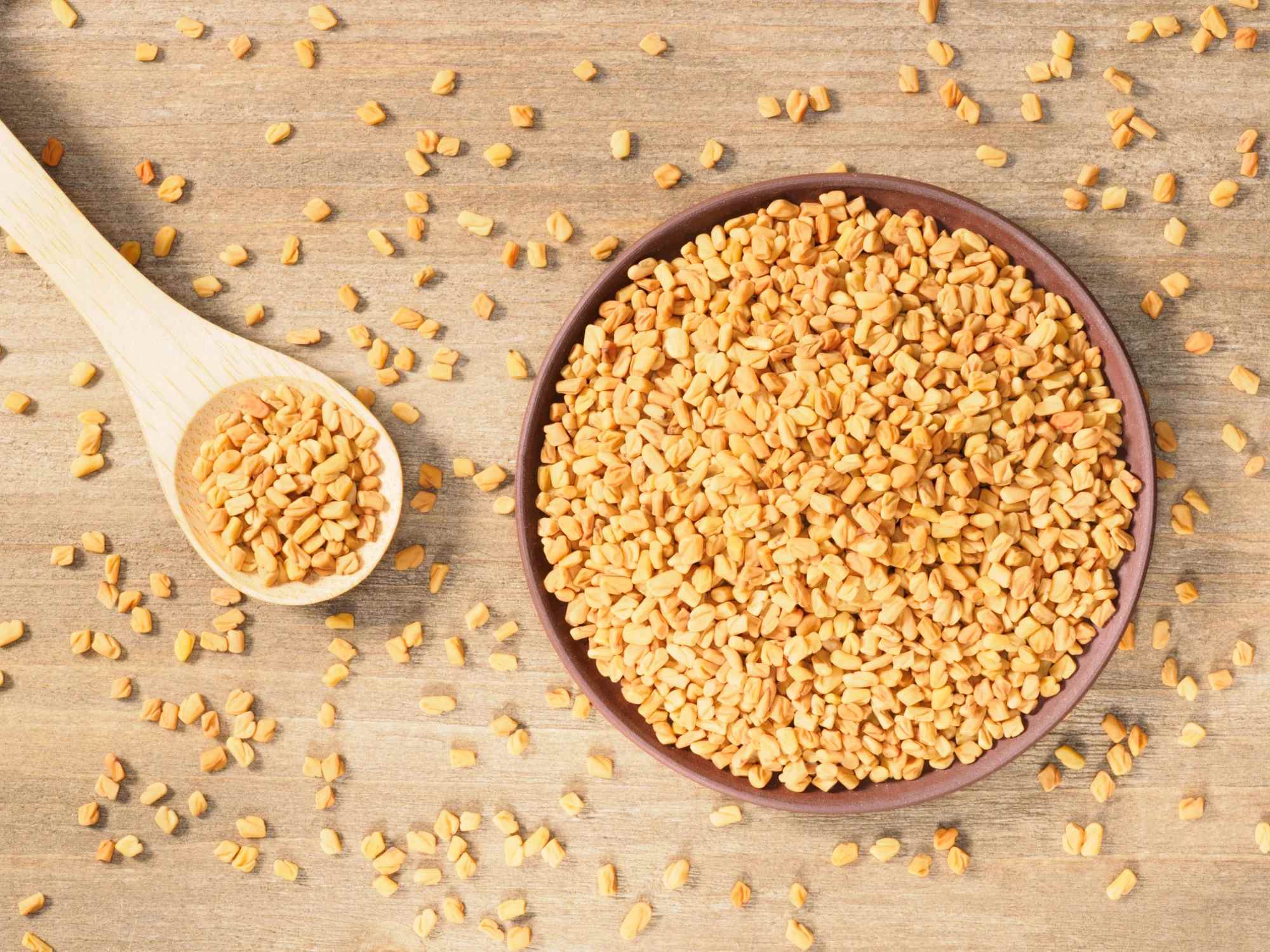Home>Gardening News and Trends>Latest News>How To Cook Vegetables
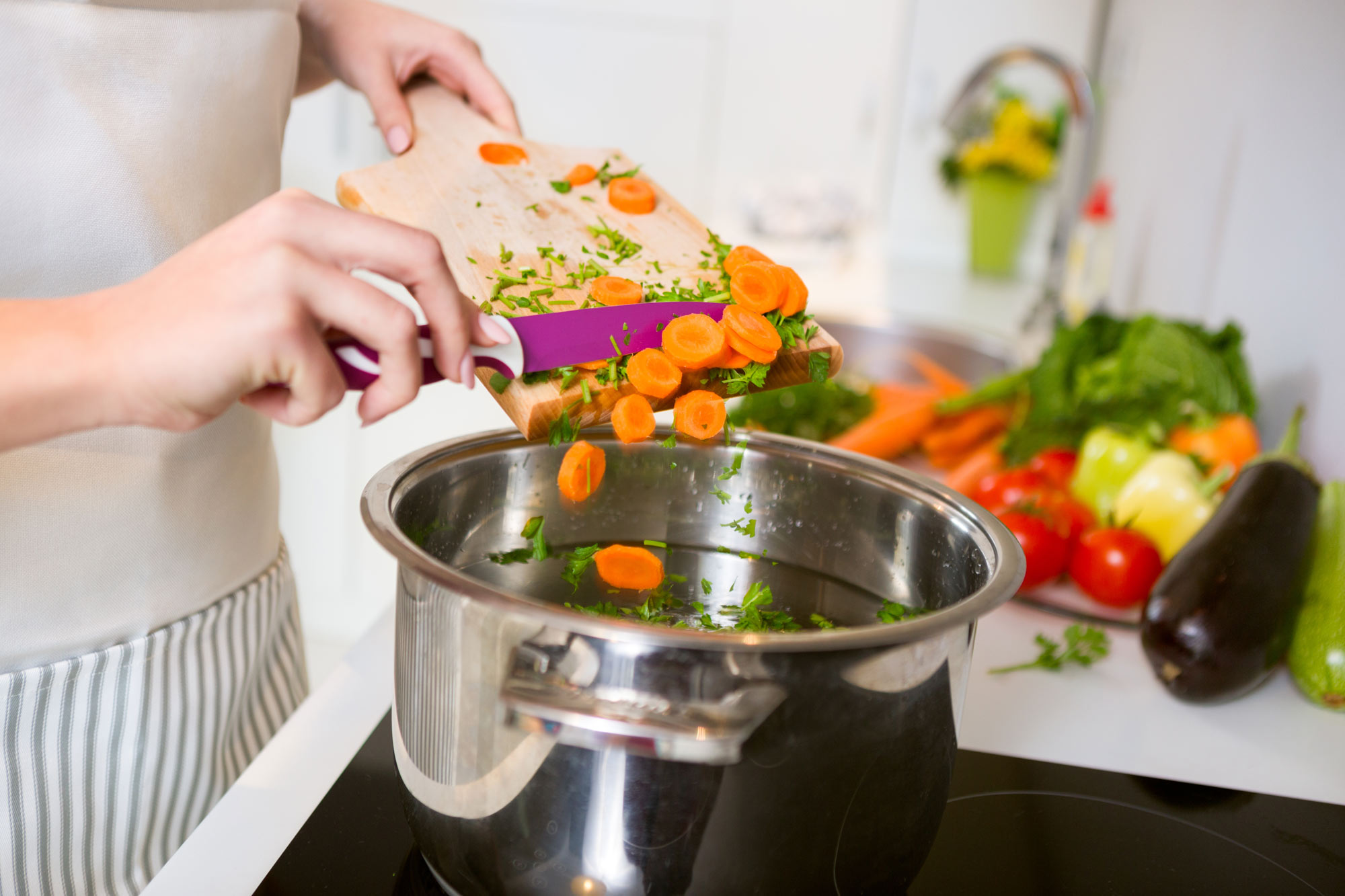

Latest News
How To Cook Vegetables
Modified: January 22, 2024
Looking for the latest news on how to cook vegetables? Discover expert tips and techniques for preparing delicious and nutritious vegetable dishes.
(Many of the links in this article redirect to a specific reviewed product. Your purchase of these products through affiliate links helps to generate commission for Chicagolandgardening.com, at no extra cost. Learn more)
Table of Contents
- Introduction
- Why Cook Vegetables
- Health Benefits of Cooking Vegetables
- Selecting Fresh Vegetables
- Basic Preparation Techniques
- Boiling Vegetables
- Steaming Vegetables
- Roasting Vegetables
- Stir-Frying Vegetables
- Sautéing Vegetables
- Grilling Vegetables
- Blanching Vegetables
- Seasoning and Flavoring Vegetables
- Tips for Cooking Specific Vegetables
- Conclusion
Introduction
Welcome to the world of cooking vegetables! Whether you’re a seasoned chef or a novice in the kitchen, learning how to cook vegetables is an essential skill. Vegetables are not only delicious, but they also provide a myriad of health benefits. In this article, we will explore the various methods of cooking vegetables and how to achieve the best results.
Why should you cook vegetables? Cooking vegetables not only enhances their flavors and textures but also improves their nutritional value. While some veggies can certainly be enjoyed raw, cooking can make them easier to digest and absorb their nutrients. Plus, it opens up a world of culinary possibilities, allowing you to experiment with different flavors, seasonings, and cooking techniques.
Now, let’s dive into the numerous health benefits of cooking vegetables. When vegetables are cooked, their cell walls break down, making nutrients more accessible to our bodies. Additionally, cooking can destroy harmful bacteria and parasites, reducing the risk of foodborne illnesses. Heat also helps to break down certain compounds that may hinder nutrient absorption or cause digestive discomfort.
However, it’s important to note that different cooking methods can affect the nutritional content of vegetables to some extent. Some nutrients, such as vitamin C and certain B vitamins, are sensitive to heat and can be lost during cooking. However, other nutrients, such as lycopene in tomatoes or beta-carotene in carrots, become more bioavailable when cooked.
When it comes to cooking vegetables, freshness is key. Selecting the right vegetables is crucial for achieving optimal flavor and texture. Look for vegetables that are firm, brightly colored, and free of blemishes or signs of spoilage. Whenever possible, choose locally sourced or organic produce to ensure the best quality and flavor.
Why Cook Vegetables
Cooking vegetables not only brings out their natural flavors but also enhances their nutritional value. While some vegetables can be enjoyed raw, cooking them can provide numerous benefits. Here are a few reasons why cooking vegetables is important:
- Improved Digestion: Cooking vegetables can break down the tough fibers, making them easier to digest. This can be particularly beneficial for those with sensitive stomachs or digestive issues.
- Increase Nutrient Absorption: Cooking vegetables helps to release and unlock the nutrients, making them more available for our bodies to absorb. Certain nutrients, like lycopene in tomatoes or beta-carotene in carrots, become more bioavailable when cooked.
- Destroy Harmful Bacteria: Cooking vegetables at the right temperature can destroy harmful bacteria and parasites, reducing the risk of foodborne illnesses.
- Enhance Flavor and Texture: Cooking can transform the taste and texture of vegetables, making them more enjoyable to eat. It can soften tough vegetables and caramelize natural sugars, adding depth and complexity to their flavors.
- Expand Culinary Options: Cooking vegetables opens up a world of culinary possibilities. You can experiment with different flavors, seasonings, and cooking techniques to create delicious and creative dishes.
While there are benefits to cooking vegetables, it’s important to strike a balance. Some nutrients, like vitamin C and certain B vitamins, are sensitive to heat and can be partially lost during cooking. To retain maximum nutrients, consider using cooking methods that preserve nutrients, such as steaming or stir-frying.
Overall, cooking vegetables can be a valuable way to enhance their taste, texture, and nutritional value. By understanding the benefits and choosing the right cooking methods, you can enjoy the flavors and health advantages that cooking vegetables have to offer.
Health Benefits of Cooking Vegetables
When it comes to maintaining a healthy diet, vegetables play a crucial role. Cooking vegetables not only adds flavor and variety to meals but also offers numerous health benefits. Here are some of the significant health benefits of cooking vegetables:
- Enhanced Nutrient Absorption: Cooking vegetables helps break down the cell walls, allowing our bodies to better absorb the essential nutrients they contain. This is especially true for vegetables that are rich in fat-soluble vitamins, such as vitamins A, D, E, and K.
- Increased Antioxidant Activity: Certain cooking methods, such as boiling or steaming, can increase the antioxidant activity of vegetables. Antioxidants help protect our cells from damage caused by free radicals and can contribute to overall health and disease prevention.
- Improved Digestion: Cooking vegetables can help make them easier to digest by softening their fibers. This can be particularly useful for individuals with digestive issues, such as irritable bowel syndrome (IBS) or sensitive stomachs.
- Reduced Anti-Nutrients: Some vegetables contain naturally occurring anti-nutrients, such as phytic acid or oxalates, which can hinder nutrient absorption. Cooking can help reduce the levels of anti-nutrients, making the nutrients more bioavailable.
- Lowered Risk of Foodborne Illness: Properly cooking vegetables can destroy harmful bacteria, parasites, and other pathogens, reducing the risk of foodborne illnesses. This is especially important for individuals with weakened immune systems, pregnant women, and young children.
- Increased Variety and Consumption: Cooking vegetables allows for a wider range of flavors, textures, and cooking methods, making them more appealing to eat. This can encourage individuals to increase their vegetable consumption and enjoy a more diverse and nutritious diet.
It’s important to note that the specific health benefits of cooked vegetables can vary depending on the cooking method used and the specific vegetable being cooked. Some nutrients, like vitamin C and certain B vitamins, are sensitive to heat and can be partially lost during cooking. To retain maximum nutrients, consider using cooking methods that preserve nutrients, such as roasting or stir-frying.
Incorporating a variety of cooked vegetables into your diet can provide a wide range of health benefits and contribute to overall well-being. Remember to choose fresh, high-quality vegetables and experiment with different cooking techniques to enjoy the delicious flavors and maximize the health benefits they have to offer.
Selecting Fresh Vegetables
When it comes to cooking vegetables, selecting fresh and high-quality produce is essential for achieving delicious and nutritious results. Here are some tips for selecting the best fresh vegetables:
- Look for Vibrant Colors: Choose vegetables that have vibrant and bright colors. It indicates freshness and a higher nutritional content. Avoid vegetables that are dull, faded, or discolored as they may be past their prime.
- Check for Firmness: Gently squeeze or press the vegetables to check for firmness. They should feel firm and spring back when touched. Avoid vegetables that are mushy, soft, or have indentations, as they may be overripe or spoiled.
- Inspect for Blemishes: Examine the vegetables thoroughly for any signs of blemishes, bruises, or mold. These can be indicators of poor quality or spoilage. Choose vegetables that are smooth, intact, and free from any visible damage.
- Consider Seasonality: Opt for vegetables that are in season. Seasonal vegetables are not only fresher but also tend to be more flavorful and less expensive. Check your local farmers’ market or consult a seasonal produce guide for the best options.
- Smell for Freshness: Some vegetables, such as herbs or leafy greens, have a distinct aroma. Take a whiff and check for a fresh and pleasant smell. Avoid vegetables with a sour, musty, or unpleasant odor, as it could be a sign of spoilage.
- Prefer Organic or Local: Whenever possible, opt for organic vegetables or those sourced from local farmers. Organic vegetables are free from harmful pesticides, and locally sourced vegetables are typically fresher and support the local community.
It’s important to note that different vegetables have different characteristics and signs of freshness. Research or consult reliable sources for specific guidelines on selecting each vegetable. Additionally, proper storage and handling techniques can also help maintain the freshness and quality of your vegetables.
By selecting fresh vegetables, you can ensure optimal taste, texture, and nutritional value in your cooking. Incorporate a variety of colorful and fresh vegetables into your meals to enjoy their incredible flavors and reap the nutritional benefits they offer.
Basic Preparation Techniques
Before diving into specific cooking methods, it’s important to familiarize yourself with some basic preparation techniques for vegetables. These techniques will help you enhance the flavors, textures, and overall cooking experience. Here are some fundamental preparation techniques to get you started:
- Washing: Start by washing the vegetables under cold running water to remove any dirt, debris, or pesticides. Gently rub the surface of leafy greens or firm vegetables with your fingers or a soft brush. Pat them dry with a clean kitchen towel or use a salad spinner to remove excess moisture.
- Peeling: Some vegetables, like carrots or potatoes, may need peeling before cooking. Use a vegetable peeler or a paring knife to remove the outer skin gently. Alternatively, you can opt to keep the skin on for added nutrients and texture.
- Trimming and Cutting: Trim off any unwanted stems, roots, or leaves from the vegetables. Then, depending on your recipe or personal preference, cut the vegetables into different shapes and sizes. Common cutting techniques include dicing, slicing, julienning, or mincing.
- Blanching: Blanching involves briefly boiling vegetables and then quickly transferring them to ice-cold water to stop the cooking process. It helps to preserve the vibrant color, texture, and nutrients of the vegetables.
- Marinating: Marinating vegetables involves soaking them in a flavorful mixture of herbs, spices, oils, and acids. This technique enhances the taste and tenderizes the vegetables. Marinating is commonly used for grilling, roasting, or stir-frying vegetables.
Depending on the recipe or cooking method you choose, these preparation techniques may vary. It’s important to follow specific instructions and adjust the techniques accordingly. Additionally, always use the appropriate tools, such as sharp knives and cutting boards, to ensure safe and efficient preparation.
By mastering these basic preparation techniques, you’ll be well-equipped to embark on your cooking journey and create delicious vegetable dishes. Remember to have fun, be creative, and explore different flavors and combinations to make every meal a delightful and satisfying experience.
Boiling Vegetables
Boiling vegetables is one of the most common and straightforward cooking methods. It involves submerging the vegetables in boiling water until they reach the desired tenderness. Here’s a step-by-step guide on how to boil vegetables:
- Choose the Right Pot: Select a pot large enough to accommodate the vegetables with some room to spare. Using a larger pot ensures that the vegetables cook evenly and quickly.
- Prepare the Vegetables: Wash the vegetables thoroughly and trim off any unwanted parts. For larger vegetables, such as potatoes or carrots, consider cutting them into smaller, bite-sized pieces for faster and more even cooking.
- Boil the Water: Bring a pot of salted water to a rolling boil over high heat. Adding salt to the water enhances the flavor of the vegetables.
- Add the Vegetables: Carefully place the prepared vegetables into the boiling water. Make sure they are fully submerged. Avoid overcrowding the pot, as it may result in uneven cooking and overcooking.
- Adjust the Heat: Reduce the heat to medium or a simmer once the water returns to a boil. Maintain a gentle boil throughout the cooking process. Boil the vegetables until they reach the desired tenderness. This can vary depending on the type and size of the vegetables.
- Test for Doneness: Use a fork or a knife to pierce the vegetables and check for the desired level of tenderness. The cooking time will vary, with denser vegetables taking longer to cook. Be mindful not to overcook the vegetables to the point where they become mushy.
- Drain and Serve: Once the vegetables are cooked to perfection, carefully drain them in a colander to remove excess water. Serve them hot as a side dish or incorporate them into various recipes.
Boiling is a versatile method that can be used to cook a wide variety of vegetables, including potatoes, carrots, broccoli, cauliflower, and green beans. It’s worth noting that boiling can cause some water-soluble nutrients, such as vitamin C and certain B vitamins, to leach into the cooking water. However, these nutrients can be retained by using the cooking water for stocks or soups.
Experiment with different cooking times to achieve the desired level of doneness. To retain maximum nutrients, avoid overboiling and cook the vegetables until they are just tender. Remember to season the vegetables with additional spices, herbs, or sauces before serving to enhance their flavor and make them more enjoyable to eat.
Steaming Vegetables
Steaming is a gentle and healthy cooking method that helps retain the natural flavors, colors, and nutrients of vegetables. It involves cooking the vegetables using steam generated by boiling water. Here’s a step-by-step guide on how to steam vegetables:
- Prepare the Steamer: If you have a steamer basket, place it inside a pot or saucepan. Alternatively, you can use a microwave-safe steaming container or a steaming rack.
- Add Water: Pour water into the pot until it’s just below the level of the steamer basket. Make sure the water doesn’t touch the bottom of the basket, as you want the vegetables to be cooked by the steam, not submerged in water.
- Prepare the Vegetables: Wash the vegetables thoroughly and trim off any unwanted parts. Depending on the size, you may need to cut larger vegetables into smaller, uniform pieces for even cooking.
- Steam the Vegetables: Place the prepared vegetables in the steamer basket or on the steaming rack. Cover the pot with a lid to trap the steam inside. Bring the water to a boil over medium-high heat.
- Cooking Time: Steam the vegetables until they are tender but still retain a bit of crunch. The cooking time will vary depending on the type and size of the vegetables. Generally, most vegetables will be cooked within 5 to 10 minutes.
- Test for Doneness: Use a fork or a knife to poke the vegetables and check if they are cooked to your liking. They should be easily pierced but not overly mushy.
- Season and Serve: Once the vegetables are cooked, remove them from the steamer and transfer them to a serving dish. Season them with salt, pepper, or your favorite herbs and spices. Serve them as a standalone side dish or incorporate them into salads, stir-fries, or other recipes.
Steaming vegetables helps them retain their natural color, texture, and nutrients. Unlike boiling, steaming minimizes nutrient loss as the vegetables are not directly exposed to water. It also enhances the natural sweetness and flavors of the vegetables.
Consider adding aromatics like garlic, ginger, or herbs to the water or wrapping the vegetables in parchment paper or foil with seasonings for added flavor. Steaming is a versatile method that works well for a variety of vegetables, including broccoli, cauliflower, carrots, asparagus, and green beans.
Steamed vegetables are a healthy and delicious addition to any meal. They complement a wide range of cuisines and can be enjoyed on their own or as part of a larger dish. Whether you’re a novice cook or an experienced chef, steaming vegetables is a simple and effective way to prepare nutritious meals.
Roasting Vegetables
Roasting vegetables is a popular cooking technique that brings out their natural sweetness and creates delicious caramelization. This method involves baking the vegetables in the oven at a high temperature. Here’s a step-by-step guide on how to roast vegetables:
- Preheat the Oven: Preheat your oven to around 400°F (200°C). This high heat helps to caramelize the natural sugars in the vegetables and create a delicious roasted flavor.
- Prepare the Vegetables: Wash the vegetables thoroughly and trim off any unwanted parts. Cut them into even-sized pieces for more uniform cooking. Keep in mind that denser vegetables may require slightly longer cooking times.
- Toss with Oil and Seasonings: In a large bowl, toss the vegetables with a drizzle of olive oil or your preferred cooking oil. Make sure all the vegetables are well-coated. Add seasonings such as salt, pepper, herbs, or spices according to your taste preferences.
- Spread on a Baking Sheet: Arrange the seasoned vegetables in a single layer on a baking sheet. Be sure not to overcrowd the pan, as overcrowding will prevent proper browning and may result in steaming rather than roasting.
- Roast in the Oven: Place the baking sheet in the preheated oven and let the vegetables roast for about 20-25 minutes, or until they are golden brown and tender. Check on the vegetables and give them a toss or stir halfway through the cooking time to ensure even browning.
- Test for Doneness: Before removing the vegetables from the oven, check their doneness by piercing them with a fork or a knife. They should be tender but still have a slight bite to them.
- Serve and Enjoy: Once the vegetables are cooked to perfection, remove them from the oven and transfer them to a serving dish. Roasted vegetables make a delicious side dish or can be incorporated into various dishes like salads, pasta, or grain bowls.
Roasting vegetables not only enhances their flavors but also gives them a pleasant crispy texture. The high heat and dry environment in the oven draw out the moisture from the vegetables, intensifying their natural flavors.
Roasting works well for a variety of vegetables, including root vegetables like potatoes, carrots, and beets, as well as cruciferous vegetables like cauliflower, broccoli, and Brussels sprouts. You can also get creative and mix different vegetables together to create flavor combinations that suit your taste.
Remember to adjust the cooking time depending on the size and thickness of the vegetables. Thinner vegetables may require less time to roast, while larger pieces may need a bit longer. Keep an eye on the vegetables as they cook to prevent burning and ensure the desired level of caramelization.
Roasted vegetables are a versatile and delicious addition to any meal. They add depth and complexity to dishes and can be enjoyed as a side dish, in salads, or as a main course. Get creative with your seasonings and enjoy the wonderful flavors that roasting brings out in vegetables.
Stir-Frying Vegetables
Stir-frying is a fast and flavorful cooking technique that originated in Asian cuisine. It involves quickly cooking vegetables in a hot pan or wok with a small amount of oil over high heat. Stir-frying allows the vegetables to retain their crispness, vibrant colors, and nutrients. Here’s a step-by-step guide on how to stir-fry vegetables:
- Prepare the Vegetables: Wash the vegetables thoroughly and trim off any unwanted parts. Cut the vegetables into uniform, bite-sized pieces to ensure even cooking.
- Preheat the Pan or Wok: Heat a pan or wok over high heat until it becomes hot. Add a small amount of oil with a high smoke point, such as vegetable or peanut oil, and swirl it around to coat the bottom and sides of the pan.
- Add Aromatics: Optional but highly recommended, add minced garlic, ginger, or sliced onions to the hot oil. Stir-fry them for a few seconds until they become fragrant.
- Add Vegetables: Add the prepared vegetables to the pan. It’s best to start with the vegetables that take the longest to cook, such as carrots or bell peppers. Stir-fry them for a minute or two before adding other vegetables.
- Stir-Fry and Toss: Continuously stir and toss the vegetables in the hot pan using a spatula or tongs. This ensures even cooking and prevents them from sticking to the pan. The high heat and constant movement quickly cook the vegetables while maintaining their crispness.
- Sauce it Up: Once the vegetables are cooked to your desired level of crispness, add your favorite stir-fry sauce or seasonings. Common stir-fry sauces include soy sauce, oyster sauce, hoisin sauce, or a combination of spices and herbs.
- Toss and Coat: Stir-fry the vegetables for another minute or two to coat them evenly with the sauce and allow the flavors to meld. The sauce should lightly glaze the vegetables without making them soggy.
- Remove from Heat and Serve: Remove the pan or wok from the heat, and transfer the stir-fried vegetables to a serving dish immediately to prevent them from overcooking. Serve them hot as a side dish or as a component of stir-fry noodles, rice, or other main dishes.
Stir-frying is a versatile cooking technique that works well with a wide variety of vegetables, including bell peppers, broccoli, snap peas, mushrooms, and bok choy. You can also experiment with combining different vegetables to create vibrant and flavorful stir-fry dishes.
Feel free to get creative with your stir-fry by adding proteins like chicken, beef, shrimp, or tofu. You can also incorporate additional ingredients such as nuts, seeds, or herbs to enhance the taste and texture of the dish.
Stir-fried vegetables are a quick, healthy, and delicious option for busy weeknight meals. The hot and fast cooking method helps to retain the natural flavors, colors, and nutrients of vegetables, making stir-frying a go-to cooking technique for many home cooks.
Sautéing Vegetables
Sautéing is a versatile and efficient cooking technique that involves quickly cooking vegetables in a shallow pan over medium to high heat with a small amount of oil or butter. This method helps to develop flavors, retain texture, and create a beautiful golden color in the vegetables. Here’s a step-by-step guide on how to sauté vegetables:
- Prepare the Vegetables: Start by washing the vegetables thoroughly and removing any unwanted parts. Cut them into small, uniform-sized pieces for even cooking.
- Preheat the Pan: Heat a frying pan or skillet over medium to high heat. Once the pan is hot, add a small amount of oil or butter and swirl it around to coat the bottom of the pan.
- Add Aromatics: For added flavor, you can include aromatics such as minced garlic, chopped onions, or grated ginger. Sauté the aromatics for a minute until they become fragrant.
- Add Vegetables: Add the prepared vegetables to the pan, spreading them out in a single layer. This allows each piece to come into direct contact with the heat, promoting even cooking.
- Sautéing and Tossing: Continuously stir and toss the vegetables in the pan using a spatula or tongs. This ensures that all the vegetables are evenly cooked and prevents them from sticking or burning.
- Cooking Time: Sauté the vegetables until they are tender-crisp, keeping them slightly firm with a hint of texture. The cooking time may vary depending on the type and size of the vegetables.
- Season and Finish: Just before removing the vegetables from the heat, add salt, pepper, herbs, or other seasonings to taste. Give the vegetables a final toss to evenly distribute the flavors.
- Serve and Enjoy: Transfer the sautéed vegetables to a serving dish and serve them immediately while they’re still hot and flavorful. Sautéed vegetables are a versatile side dish and can also be added to pasta, rice, salads, or wraps.
Sautéing vegetables is a fast and efficient method that allows you to cook vegetables quickly while preserving their natural flavors and textures. It works well with a variety of vegetables, including bell peppers, zucchini, mushrooms, spinach, and more.
Experiment with different oils, such as olive oil, coconut oil, or sesame oil, to impart subtle flavors to the sautéed vegetables. You can also add additional ingredients like nuts, seeds, or grated cheese to enhance the dish further.
Sautéing is a versatile technique that provides endless opportunities for creativity in the kitchen. Mastering the sautéing method allows you to quickly and easily incorporate delicious and nutritious vegetables into your meals.
Grilling Vegetables
Grilling vegetables is a popular cooking method that imparts a smoky flavor and delicious charred marks. It’s a fantastic way to showcase the natural sweetness and enhance the textures of various vegetables. Grilling vegetables adds depth and complexity to dishes while keeping them fresh and healthy. Here’s a step-by-step guide on how to grill vegetables:
- Preheat the Grill: Preheat your grill to medium-high heat, aiming for a temperature of around 400-450°F (200-230°C). This ensures proper caramelization and even cooking of the vegetables.
- Prepare the Vegetables: Wash and trim the vegetables, removing any tough stems or blemishes. For larger vegetables like eggplant, zucchini, or bell peppers, cut them into thick slices or wedges. Smaller vegetables like cherry tomatoes or mushrooms can be left whole or skewered.
- Oil and Season: Lightly brush the vegetables with oil to prevent sticking and enhance the grilling process. You can use olive oil, vegetable oil, or a flavored oil for added taste. Season the vegetables with salt, pepper, and any other desired spices or herbs.
- Grill the Vegetables: Place the vegetables directly on the grill grates, arranging them in a single layer to ensure even cooking. Close the grill lid and cook the vegetables, flipping them occasionally, for about 4-6 minutes or until they develop grill marks and are tender-crisp. Adjust the cooking time depending on the vegetable and desired level of char.
- Remove and Rest: Carefully transfer the grilled vegetables to a serving platter or cutting board. Let them rest for a few minutes to allow the flavors to meld and any residual heat to finish cooking the vegetables.
- Serve and Enjoy: Serve the grilled vegetables as a side dish or incorporate them into salads, sandwiches, wraps, or as toppings for pizzas or bruschetta. Drizzle with a bit of balsamic glaze, sprinkle with fresh herbs, or crumble some cheese on top for added flavor and presentation.
Grilled vegetables are incredibly versatile and can include a wide range of produce, such as zucchini, eggplant, bell peppers, onions, asparagus, corn, mushrooms, and more. The high heat of the grill caramelizes the sugars in the vegetables, bringing out their natural sweetness and adding a smoky flavor.
Get creative! Try brushing the vegetables with marinades, vinaigrettes, or tangy sauces before grilling to enhance the flavors. Skewer smaller vegetables to make vegetable kebabs for a fun and delicious presentation.
Grilling vegetables not only provides a unique and delightful taste but also adds a visual appeal to any meal. It’s a great way to enjoy the flavors of the season and impress your family and friends with a stunning and flavorful grilled vegetable feast.
Blanching Vegetables
Blanching is a cooking technique that involves briefly boiling vegetables and then rapidly cooling them in ice-cold water. This method helps to preserve the vibrant colors, crisp texture, and nutritional value of the vegetables. Blanching is commonly used for preparing vegetables for freezing, as well as for various recipes that require partially cooked vegetables. Here’s a step-by-step guide on how to blanch vegetables:
- Prepare the Vegetables: Wash the vegetables thoroughly and trim off any unwanted parts. Cut them into desired sizes or leave them whole, depending on your recipe or preference.
- Boil Water: Fill a large pot with water and bring it to a rolling boil over high heat. Add a pinch of salt to enhance the flavor of the vegetables.
- Add the Vegetables: Carefully place the vegetables into the boiling water. Ensure that the water completely covers the vegetables.
- Blanching Time: Cook the vegetables for a brief period, usually 1-3 minutes, depending on the vegetable type and size. Blanching times vary, so refer to specific vegetable guidelines for precise timing.
- Rapid Cooling: Use a slotted spoon or tongs to quickly transfer the blanched vegetables to a large bowl filled with ice water. The ice water will stop the cooking process and cool down the vegetables rapidly.
- Cool Completely: Allow the vegetables to cool completely in the ice water, ensuring they are no longer warm to the touch. This step helps retain the vibrant color, texture, and nutritional value.
- Drain and Dry: Remove the vegetables from the ice water and drain them well. Pat them dry with a clean kitchen towel or paper towels, removing excess water.
- Proceed with Recipe: At this point, the blanched vegetables can be used immediately in your desired recipe, such as stir-fries, salads, or pasta dishes. Alternatively, for long-term storage, you can freeze them in airtight containers or freezer bags.
Blanching is particularly useful for vegetables that you want to preserve but would benefit from a brief cooking time to improve taste and texture. It helps retain the crunchiness, vibrant colors, and nutrient content, making blanched vegetables a versatile ingredient in many dishes.
Remember that blanching times can vary depending on the vegetable’s density and size. Some vegetables, such as broccoli or asparagus, may require longer blanching times, while delicate greens like snap peas or spinach may only need a quick blanching to retain their vibrant appearance.
By mastering the blanching technique, you can easily prepare vegetables that are ready to be used in various recipes or preserved for later use. Blanching is a valuable cooking method for any home cook seeking to elevate the texture, taste, and visual appeal of their vegetables.
Seasoning and Flavoring Vegetables
Seasoning and flavoring vegetables is essential to elevate their taste and add depth to your dishes. Properly seasoned vegetables can transform a simple side into a standout component of a meal. Here are some ways to season and flavor your vegetables:
- Herbs and Spices: Herbs and spices are a great way to add unique flavors to your vegetables. Experiment with classics like basil, thyme, rosemary, or try more exotic options like cumin, turmeric, or paprika. Dried herbs work well for longer cooking methods, while fresh herbs can be added towards the end for a burst of freshness.
- Salt and Pepper: Salt and pepper are the staples of seasoning and enhance the natural flavors of vegetables. Use them judiciously to bring out the best taste. Sprinkling a pinch of salt and freshly ground black pepper can go a long way in elevating the overall flavor of your vegetables.
- Citrus: Squeeze a bit of lemon, lime, or orange juice over your cooked vegetables to brighten their flavors. You can also zest the citrus peel for an added burst of freshness. Citrus fruits provide a tangy and refreshing taste that pairs well with a variety of vegetables.
- Garlic and Ginger: These aromatic ingredients can infuse wonderful flavors into your vegetables. Minced garlic or grated ginger can be added to stir-fries, roasted vegetables, or sautés. Their distinctive aromas and flavors bring an extra dimension to your dishes.
- Vinegars and Oils: Experiment with different types of vinegars, such as balsamic, apple cider, or rice vinegar, to add a tangy kick to your vegetables. Drizzling some quality extra virgin olive oil or flavored oils like sesame or truffle oil can provide richness and additional depth of flavor.
- Sauces and Condiments: Enhance your vegetables with a variety of sauces and condiments. Soy sauce, tamari, hoisin sauce, or Worcestershire sauce can add a savory umami taste. Mustard, tahini, or pesto can provide creamy and bold flavors. Be mindful of the flavors and pair them wisely with the vegetables you are cooking.
- Cheese and Nuts: Sprinkling grated or crumbled cheese, such as Parmesan, feta, or goat cheese, over your vegetables can add creaminess and saltiness. Toasted nuts like almonds, walnuts, or pine nuts can contribute a satisfying crunch and extra flavor.
Remember to taste as you season and adjust the amount of seasoning accordingly. It’s important to strike a balance, ensuring the flavors enhance the natural taste of the vegetables without overpowering them.
Each vegetable has its own unique flavor profile and characteristics, so take the time to explore which seasonings and flavorings work best for different types of vegetables. Don’t be afraid to experiment, as seasoning and flavoring vegetables can be a creative and enjoyable process!
Tips for Cooking Specific Vegetables
Each vegetable has its own unique qualities and characteristics that require specific cooking techniques to bring out their best flavors and textures. Here are some tips for cooking specific vegetables:
- Broccoli: To maintain its vibrant green color and crisp texture, steam broccoli for a few minutes until tender-crisp, or roast it at high heat to develop a slight caramelized flavor.
- Carrots: Roasting or sautéing carrots helps enhance their natural sweetness. Cut them into evenly sized pieces for even cooking and add herbs like dill or thyme for extra flavor.
- Spinach: Sauté spinach briefly with some garlic and olive oil over medium heat until wilted. Avoid overcooking, as spinach can quickly turn mushy.
- Mushrooms: Sauté mushrooms on high heat to achieve a golden brown color and enhance their earthy flavor. Don’t overcrowd the pan, as mushrooms release moisture and need space to properly brown.
- Zucchini: Grilling or sautéing zucchini brings out its natural sweetness. Cut into uniform slices, lightly coat with oil, and season generously with herbs like basil or oregano.
- Tomatoes: Roasting or grilling tomatoes intensifies their sweetness and creates rich flavors. Use ripe tomatoes for the best results, and season with garlic, basil, or balsamic for extra depth.
- Cauliflower: Roast or steam cauliflower until tender. For added flavor, brush with a mixture of olive oil, garlic, and spices before cooking. Cauliflower can also be mashed or riced as a healthier alternative to traditional starches.
- Green Beans: Blanch or steam green beans until tender-crisp and still vibrant in color. Sauté them with garlic and a splash of lemon juice for a simple and tasty side dish.
- Eggplant: When cooking eggplant, consider salting it beforehand to draw out the bitterness and improve texture. Roasting, grilling, or stir-frying are great methods to enhance its creaminess.
- Peppers: Roast or grill peppers to bring out their natural sweetness and smoky flavor. Peel off the charred skin, remove the seeds and membrane, and use them in salads, sandwiches, or stir-fries.
These are just a few examples of the many ways to cook specific vegetables. Experimenting with different cooking techniques and flavor combinations will help you discover your favorite methods for each vegetable.
Always remember to adjust the cooking times based on the size and density of the vegetables to ensure they are cooked to the desired level of doneness. Enjoy the process of cooking and savor the delicious flavors and textures that each vegetable has to offer!
Conclusion
Learning how to cook vegetables opens up a world of culinary possibilities and allows you to unleash the vibrant flavors and nutritional benefits that vegetables have to offer. Whether you prefer boiling, steaming, roasting, stir-frying, grilling, or blanching, each cooking method provides unique results that can enhance the taste, texture, and overall appeal of vegetables.
By selecting fresh and high-quality vegetables, you ensure a solid foundation for your cooking endeavors. Remember to prepare the vegetables properly, whether it’s washing, peeling, or cutting them into the desired shapes and sizes. Each vegetable requires specific techniques to retain its unique characteristics and nutritional value.
Seasoning and flavoring play a crucial role in making your vegetables truly shine. Experiment with herbs, spices, citrus, vinegars, and oils to add complexity and depth to your dishes. Don’t be afraid to get creative and explore different combinations to discover your personal tastes and preferences.
Ultimately, cooking vegetables is not only about nourishing our bodies, but also about creating satisfying and delicious meals. Embrace the opportunity to try new recipes, explore diverse cooking methods, and let your creativity guide you in the kitchen.
So, dive into the world of cooking vegetables, experiment with different techniques, and enjoy the multitude of flavors, textures, and health benefits that vegetables have to offer. With these tips and knowledge at your disposal, you’ll be able to create delectable vegetable dishes that will leave your taste buds wanting more.
